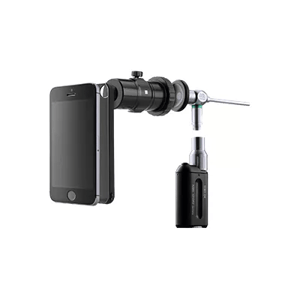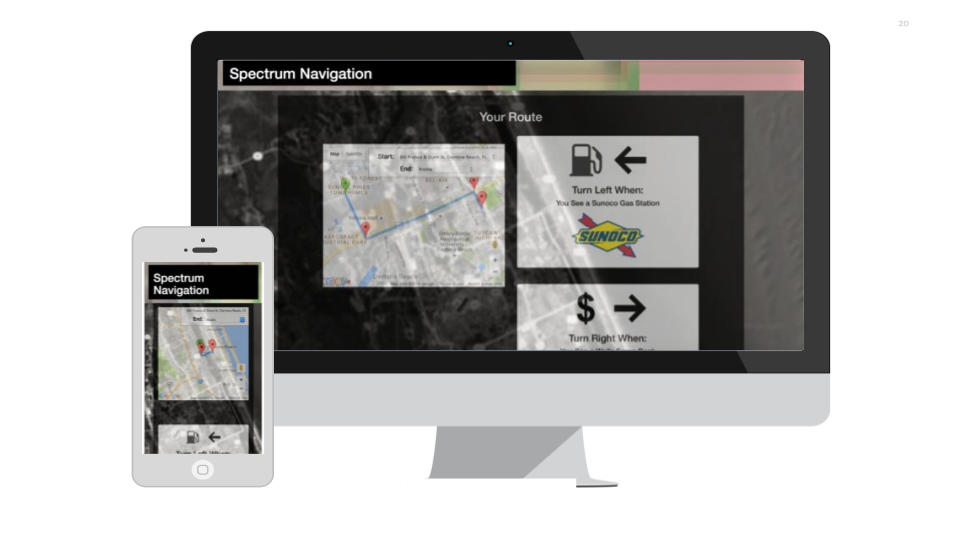4 Reasons We’re Grateful For AI
It’s the week of Thanksgiving, and we have a lot to be grateful for. Friends, family, and, of course, artificial intelligence (AI). With AI, humanity is making the world a better place. Here’s a look back at 4 reasons we’re grateful for this wondrous technology.
1. It’s improving healthcare.
Humanity has made a lot of strides in healthcare over the last few centuries, and now with AI, we’re only continuing our forward momentum.

One company, i-Nside, leveraged Clarifai’s world-leading computer vision (CV) AI to bring high-quality healthcare to even the most remote corners of the world. With their CV-driven app, non-specialists can now identify and diagnose ear diseases with almost 100% accuracy with nothing but a smartphone and an affordable attachment, no internet required.
AI-enabled applications are now being created to read, understand and extract information from handwritten clinical notes as structured data to populate a patient’s online health record. By reducing the hours spent on paperwork, AI is making physician visits far more efficient. AI is even being used to analyze these records more effectively, helping doctors to
Machine learning is powering precision medicine, an approach that takes into account genetic, environmental, and lifestyle differences when determining how best to treat certain diseases. With facial recognition, providers can also effectively communicate with all their patients, nonverbal or otherwise, so they can ensure these treatments are effective. With all these applications of AI in play, providers can get back to doing what only they can do, i.e., providing patients with the empathetic, compassionate care they need.
2. It’s keeping our favorite sites clutter-free.
With CV, retailers like online marketplaces no longer have to worry about irrelevant, inappropriate, or inadequate user-generated content (UGC) cluttering their feeds. With computer vision, these posts are filtered out before they can even make it in front of a customer’s eyes.
Studies have shown that over 90% of consumers find UGC to be helpful when making a purchasing decision, making it imperative to keep such content on site. Companies like OpenTable, for instance, use images diners have shared to the social media pages of their restaurants to offer users an authentic look at the dining experience. By moderating this content for relevancy and quality, businesses can protect their brand and increase sales, with US-based online marketplace finding that listings with high-quality images were almost 3 times more likely to result in a sale.
Recently, Clarifai launched our first fully end-to-end Moderation Solution into public beta to augment our existing world-class CV AI. This pre-built moderation solution offers our customers even quicker implementation, with an out-of-the-box user interface with all the tools required to manage moderation tasks and screen for various kinds of undesired content.
So, whether you want to filter out NSFW images or screen for image quality, CV-powered solutions like ours are force multipliers for the amounts of data your platform can moderate. CV is proving itself to be a more efficient and cost-effective means for businesses to manage their content moderation and organization needs.
3. It’s helping us to stay safe.
By investing in Clarifai’s CV, companies like Photobucket have gone from moderating only 1% of the million pieces of UGC uploaded to their sites every day to moderating 100%. This didn’t just help them to improve their moderation quality, however. Moderating offensive and explicit content is a meaningful but harrowing task with a grim mental cost. With computer vision, Photobucket was able to move a large portion of their moderation team to customer service, allowing them to still make a meaningful contribution to the company, without sacrificing their mental health.

CV also helps to protect users from themselves. Momio, a social media site for pre-teens, used Clarifai’s API to integrate our NSFW model with their platform so only suitable content for their young audience is posted.While this protects all Momio users from disturbing and inappropriate content, it also prevents children from sharing content they may later regret, a valuable lesson about social media use that will come in handy as they grow older.
CV is also advancing the fields of crowd analysis and security, allowing businesses to leverage their existing CCTV technologies to better monitor crowded or unsupervised spaces. With these advancements, security officers can now be promptly alerted of any unauthorized activities or hazards like overcrowding, stampedes, or fires, so they can quickly begin their safety or evacuation procedures and better protect patrons and staff.
AI technologies are not only helping drug safety teams to get a complete picture of how the drug is performing in the market, by collecting data from untraditional feedback channels, it can also quickly comb through that data for efficient reporting. This is allowing these teams to focus on the most critical parts of their job, like doing causality assessments of new drugs where adverse events/reactions are reported so they can quickly remove unsafe drugs or disseminate effective medications to patients.
4. It’s making the world more accessible.
It is an unfortunate truth, but much of the world’s tools, activities and opportunities are not designed to accommodate people with certain impairments and from certain backgrounds. With AI, we now have a very powerful means of righting this discrepancy.
Navigating unfamiliar territories can be very difficult for anyone, but it is particularly so for, and common among, those on the autism spectrum. From his own experience, Clarifai Captain,Austin Lubetkin knew that visual aids helped make navigating much easier, and so was inspired to develop Spectrum Navigator.  With Clarifai’s technology, he was able to build this intuitive navigation tool that could identify landmarks using Google Maps street view feature. From this, the app would give more dynamic directions based on what persons actually see, allowing them to travel with more ease.
With Clarifai’s technology, he was able to build this intuitive navigation tool that could identify landmarks using Google Maps street view feature. From this, the app would give more dynamic directions based on what persons actually see, allowing them to travel with more ease.
Other developers, like the creators of SnappTagg, were able to use our visual recognition technology to automate inventory management for non-native English speaking small online business owners. The team wanted to build a solution that could help these owners save time and effort by automatically generating tags for product images taken by the owner. When the owner uploads these images, Clarifai’s computer vision API will generate tags based on what our General Model sees. For products the API may not know, SnappTag allows the owners to train to teach our technology about these specialized products, so it can effectively translate them in the future.
Clarifai’s Custom Training also allowed the team behind GSTR (pronounced gesture) to break down communication barriers by building a web-based application that could recognize and translate sign language from visual inputs. The app gives translations as both audio and text, allowing both the hearing and deaf communities from other countries to learn and understand. GSTR also offers users educational feedback and confirmation on their gestures to help them to improve on their American Sign Language for better communication.
Thanks in part to Hollywood’s inaccurate portrayals, AI often gets a bad rap. As shown above and beyond, though, AI is helping to make the world a safer, better, and kinder place for us all. And for that, I’m sure we all give thanks.
相關推薦
4 Reasons We’re Grateful For AI
It’s the week of Thanksgiving, and we have a lot to be grateful for. Friends, family, and, of course, artificial intelligence (AI). With AI, humanity is ma
4 Reasons Why Bugs Are Good For You
Every once in a while I read something along the lines of: “most developers just want to write new features, they don’t want to work with maintenance
#25 We’re Sticking around for a Little Bit Longer & Winter Is Coming
#25 We’re Sticking around for a Little Bit Longer & Winter Is Coming“shallow focus photography of orange pumpkins” by Jonathan Talbert on UnsplashLast
Pinch us, we're dreaming: The 8-quart Instant Pot LUX is on sale for $59 for Black Friday
If you missed out on Walmart's great deal on the 6-quart Instant Pot LUX back in July, we'll do you one better: The 8-quart model is on sale for Black Frid
'We're Taking A Stand': Google Workers Protest Plans For Censored Search In China
A security guard stands in front of Google's booth at the China International Import Expo earlier this month in Shanghai. A security guard stands in front
3% of users browse with IE9 and 14% of users have a disability. Why do we only cater for the former?
我的網站 作品 form 我不 post ability img gpo 想要 我想要用一個否定聲明來開始我的文章:對於怎樣創造一個易於用戶體驗的站點,我也不是了解非常多。 讓作為一個資深開發人員的我操心的是,我在並沒有獲得太多關於這個主題(指怎樣創造一個
【微軟大法好】VS Tools for AI全攻略(2)
port shell orf 方式 virt cnblogs 我們 玩耍 虛擬 接著上文,我們來討論如何使用Azure資源來訓練我們的tensorflow項目。Azure雲我個人用得很多,主要是因為微軟爸爸批了150刀每月的額度,我可以愉快地玩耍。 那麽針對Azure,有成
Github for Ai ==計算機視覺
1 影象處理 [1] 影象風格遷移neural-style [2] 影象風格遷移neural-style-tf [3] GAN生成影象 [4] 影象翻譯 [5] 影象超解析度 [6] 目標檢測 [7] 人臉識別 [8] 運動識別 [9] 影象恢復 [10] 生成模型 [11]人臉識別打標
Github for Ai ==自然語言處理
1 文字處理 [1] 文字分類 [2] 序列建模 [3] 中文分詞 [4] 基於文字的影象合成 [5] RNN [6] 小黃雞 [7] 圖靈機 [8] 聊天機器人 2 語音處理 [1] 語音合成tensorflow-wavenet [2] 語音合成fast-wavenet [3]
Ubantu14.04 自己工作目錄安裝cuda10和cuDNN v7.4.1 (Nov 8, 2018), for CUDA 10.0
首先到cuda官網下載cuda10: 1、下載並安裝CUDA10.0 https://developer.nvidia.com/cuda-downloads?target_os=Linux&target_arch=x86_64&target_distro=Ubuntu&
Awesome Links of Books, Courses, Examples for AI, MachineLearning, DeepLearning and Tensorflow in…
Awesome Links of Books, Courses, Examples for AI, MachineLearning, DeepLearning and Tensorflow in 2018DataScienceAI Book Links | 機器學習、深度學習與自然語言處理領域推薦的書籍列表M
c學習筆記--4 迴圈控制語句 if for while do
好久之前的了,學習c語言的筆記。 依舊是老套路,從基礎的變數型別,到函式定義一步步學起 #include <stdio.h> #include <string.h> //控制語句 這個在不同語言裡幾乎都不變 void test5() {
We’re going to build 12 games in 12 months
We’re going to build 12 games in 12 monthsInspired by Pieter Levels 12 months 12 startups challenge (https://levels.io/12-startups-12-months/), I have deci
Robotics Heavyweights Embrace NVIDIA's Jetson AGX Xavier For AI Edge Intelligence
NVIDIA Isaac platform with Jetson Xavier, a computer designed specifically for robotics.NVIDIA Robots are a well-established part of manufacturing but hav
Pymetrics raises $40 million for AI
Pymetrics today announced it has raised $40 million to expand its work using a combination of neuroscience and artificial intelligence to help companies re
Why we're training the next generation of lawyers in big data
Artificial intelligence is transforming the traditional delivery of legal services. In general terms, the set of tools broadly called "legal analytics" pro
We’re running Optimizely’s Hack Reactor Scholarship and Internship program again. Here’s why.
CWe’re running Optimizely’s Hack Reactor Scholarship and Internship program again this year. Here’s why.I’m happy to announce that Optimizely is launching,
In the struggle for AI supremacy, China will prevail
CHINA'S "Sputnik moment" came on May 27th 2017. On that day an algorithm thrashed Ke Jie, the world's best player of Go, an ancient and demanding Chinese b
Idx raises $33 million for AI diagnostic systems that detect eye disease and other conditions
Artificial intelligence (AI) is emerging as a key tool in just about every industry, from marketing to recruitment and beyond. But one particularly powerfu
Neuton: A new, disruptive neural network framework for AI applications
Only basic technical skills required. And, if you are not puzzled enough yet, here's one more thing: In Neuton's FAQ, it is mentioned that the first releas

